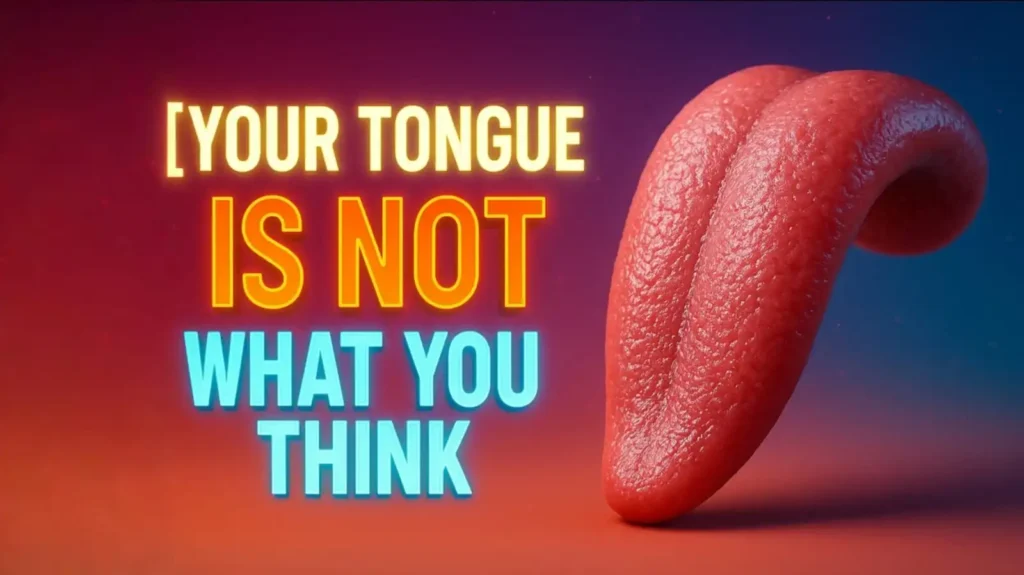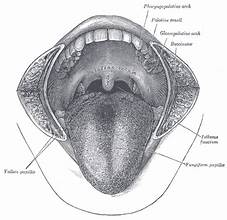
Hope you are fresh and fine, my brother/sister. Today we are diving into one of the most hard-working, funny, flexible, and slightly gross body parts you use all day without thinking: your tongue. You use it to talk, taste, swallow, clean food from your teeth, and yes—even to show attitude when you stick it out! In this guide you’ll get fun facts about the tongue, weird health clues, myths busted, kid-friendly tidbits, and even a surprise section on the Tonga Trench (because people mix the words all the time). Let’s go!
Goal: Give you the best, most useful, most fun facts about the human tongue so your post ranks, gets clicks, and keeps readers on the page.
Quick Tongue Snapshot (What It Is & Why It Matters)
Your tongue is a muscular organ covered in a moist lining and tiny bumps. It sits on the floor of your mouth and is tied down by tissue so you don’t swallow it. It helps move food while chewing, pushes food back to swallow, shapes sounds for speech, and holds many of your taste buds. Your tongue also helps keep the mouth moist by spreading saliva. All this happens in seconds, every meal, every word.
Fast facts:
- Your tongue is made mostly of muscle groups that work together.
- It’s covered in papillae—little bumps that give it texture.
- Many of your taste buds sit inside certain papillae.
- A healthy tongue is usually pink (light to deeper shades vary).
For further reading please visit
- 25 Jaw-Dropping Fun Facts About the Mouth You’ll Love!
- 5 Facts About How Guitars Can Improve Your Memory (Backed by brain science)
- You Won’t Believe These 15 Wild Facts About The Skeleton Twins!
Taste Bud Basics (Not Just on the Tongue!)

Taste buds are tiny sensory groups of cells that send taste signals to the brain. Most are on the tongue, but you also have taste-sensing areas on the roof of the mouth and in the throat. That means flavor isn’t locked into one tiny spot. Also, kids often start life with more taste buds than adults. As we age, the number can drop—one reason some foods taste stronger to children.
Bumps Called Papillae: Your Tongue’s Texture Map
Those tiny bumps you see? Papillae. They’re not all the same. Here are the main types:
- Filiform papillae: Thread-like, most common, give the tongue its sandpaper feel. They do not hold taste buds but help with texture and grip.
- Fungiform papillae: Mushroom-shaped, mostly on the tip and sides. Many taste buds live here.
- Circumvallate papillae: Larger dome-like bumps in a V shape near the back. Fewer in number but packed with taste receptors.
- Foliate papillae: Folded ridges along the sides toward the back. Also hold taste buds.
Myth Buster: The Tongue Map Is Wrong
You may have seen school charts showing sweet at the tip, salty on the side, bitter at the back. That classic tongue map is a myth. While some regions can be slightly more sensitive to certain tastes, all areas with taste buds can detect all basic flavors—sweet, salty, sour, bitter, and umami taste.
How Taste Works With Smell, Temperature & Texture
Flavor is teamwork. Taste buds send signals. Smell adds big flavor power. Texture and temperature add feel. Even spicy burn and minty cool are extra signals. That’s why a blocked nose makes food seem dull.
Is the Tongue the Strongest Muscle? (Let’s Clear It)
You’ve heard it: “The tongue is the strongest muscle in the body.” Fun to say. Not true. By most measures, the tongue doesn’t win. What is true: it’s super flexible because many small muscles work together in complex ways.
Tongue Length, Flexibility & Party Tricks
Some people can roll their tongue. Others can fold or twist. A few folks have impressively long tongues that go viral online. Flexibility comes from those interwoven muscles plus practice.
5 Fun Facts About the Tongue (Quick Bite List)
- You can taste all basic flavors across most of the tongue—not just in one zone. Tongue map myth busted.
- Your tongue helps you say almost every word you speak in any language.
- Kids are born with more taste buds, so flavors can feel stronger to them.
- The bumps on your tongue (papillae) include types that grip food, not just taste it.
- A dry tongue dehydration signal can hint your whole body needs water.
Tongue Hygiene: Why Scraping Matters
Food bits and bacteria can collect between papillae, especially on the back of the tongue. This build-up can feed bad breath. Brushing the tongue helps. A tongue scraper may remove coating more effectively for some users.
Quick Routine:
- Brush teeth, floss.
- Gently brush or scrape tongue (especially back).
- Rinse mouth.
- Stay hydrated.
What Your Tongue Color Can Say About Health
A healthy tongue is usually pink with a thin coating. Changes can hint at bigger issues (not a self-diagnosis—always check with a pro):
- White coating: Could be dehydration, yeast, or other oral issues.
- Very pale or smooth: May relate to low iron or vitamin deficiency.
- Bright red: Fever, irritation, or sometimes deficiency patterns.
- Yellow: Can appear with certain infections or liver-related issues.
- Brown/black fuzzy look: Often linked with black hairy tongue.
Common Tongue Conditions (Geographic, Black Hairy, More)
- Geographic tongue: Flat, map-like red patches with pale edges that move over time. Usually harmless.
- Black hairy tongue: Filiform papillae grow long and trap stain from food, tobacco, or bacteria.
- Dry tongue dehydration: Tongue may feel rough or sticky.
- Fissured tongue: Deep grooves, harmless but needs cleaning.
Kids Tongue Zone (Fun, Safe, Gross Facts Kids Love)
- Kids start life with lots of taste buds—so sour candy feels extra strong!
- Your tongue helps you say letters like L, T, D, N.
- Stick out your tongue and look in a mirror. See bumps? Those are papillae.
- Can you roll your tongue? Not everyone can!
- Drink water. A dry tongue can mean you need a drink break.
Fun Facts About the Mouth and Tongue Together
Your tongue doesn’t work alone. Teeth cut and crush. Saliva moistens and starts digestion. The roof of the mouth helps speech sounds.
Bonus Mix-Up: Fun Facts About the Tonga Trench (Not Your Tongue!)
The Tonga Trench is a deep ocean trench in the South Pacific. It reaches depths of over 10,800 meters and is part of a subduction zone.
When to See a Dentist or Doctor
- Sores that don’t heal in two weeks.
- Thick white, yellow, or green coatings that keep coming back.
- Painful burning patches.
- Unexplained lumps, swelling, or bleeding.
- Black hairy tongue that does not improve.
Conclusion
Your tongue is busy all day—helping you speak, eat, taste, and show emotion. Now you have fun facts about the tongue, the truth behind the tongue map myth, tongue hygiene tips, health warning signs, and even how it connects to the rest of the mouth.
FAQ
1. How many taste buds do humans have?
Estimates range from a few thousand to around ten thousand, and the number can drop as you age.
2. Can I taste sweet only at the front of my tongue?
No. All areas with taste buds can sense the main flavors.
3. What is geographic tongue?
A harmless condition that creates smooth red map-like patches.
4. What is black hairy tongue?
When surface bumps (filiform papillae) grow long and trap stain and debris.
5. My tongue looks white and dry. Should I worry?
Often dehydration or simple coating, but if it doesn’t improve, see a dentist.
Call to Action
If you liked these fun facts about the human tongue, drop a comment: Which fact shocked you most? Share this with a friend! Subscribe for more fun facts.







